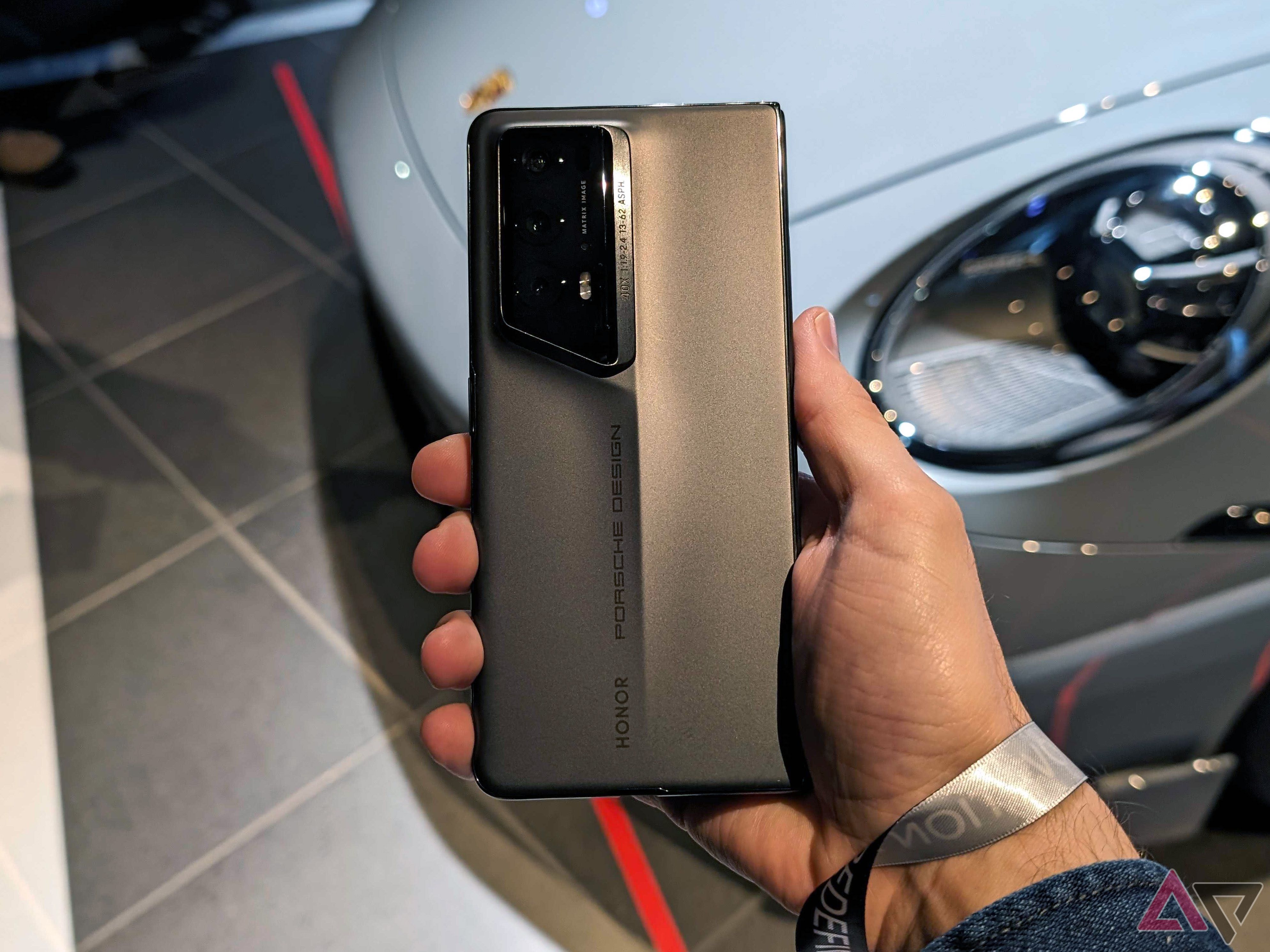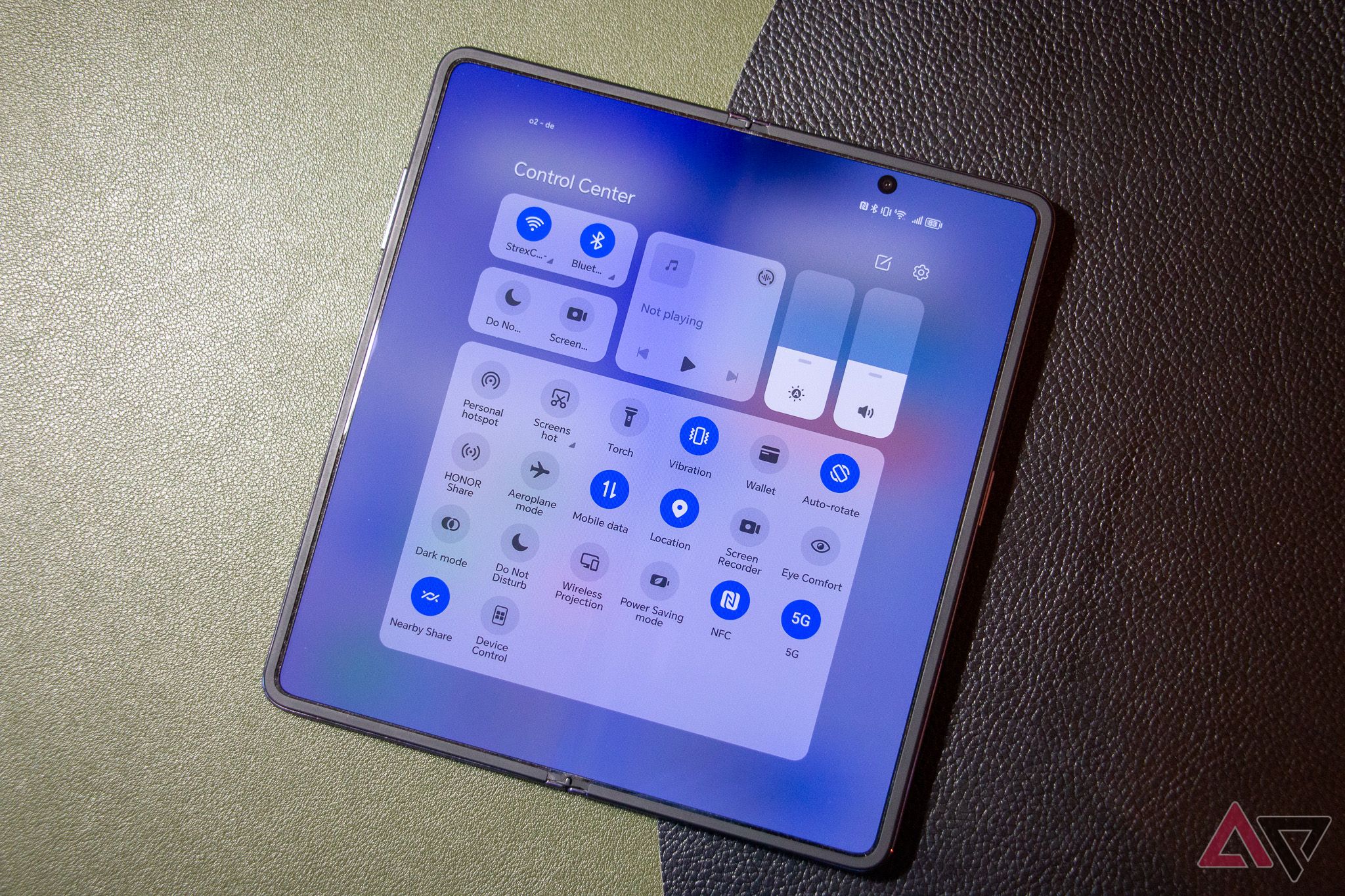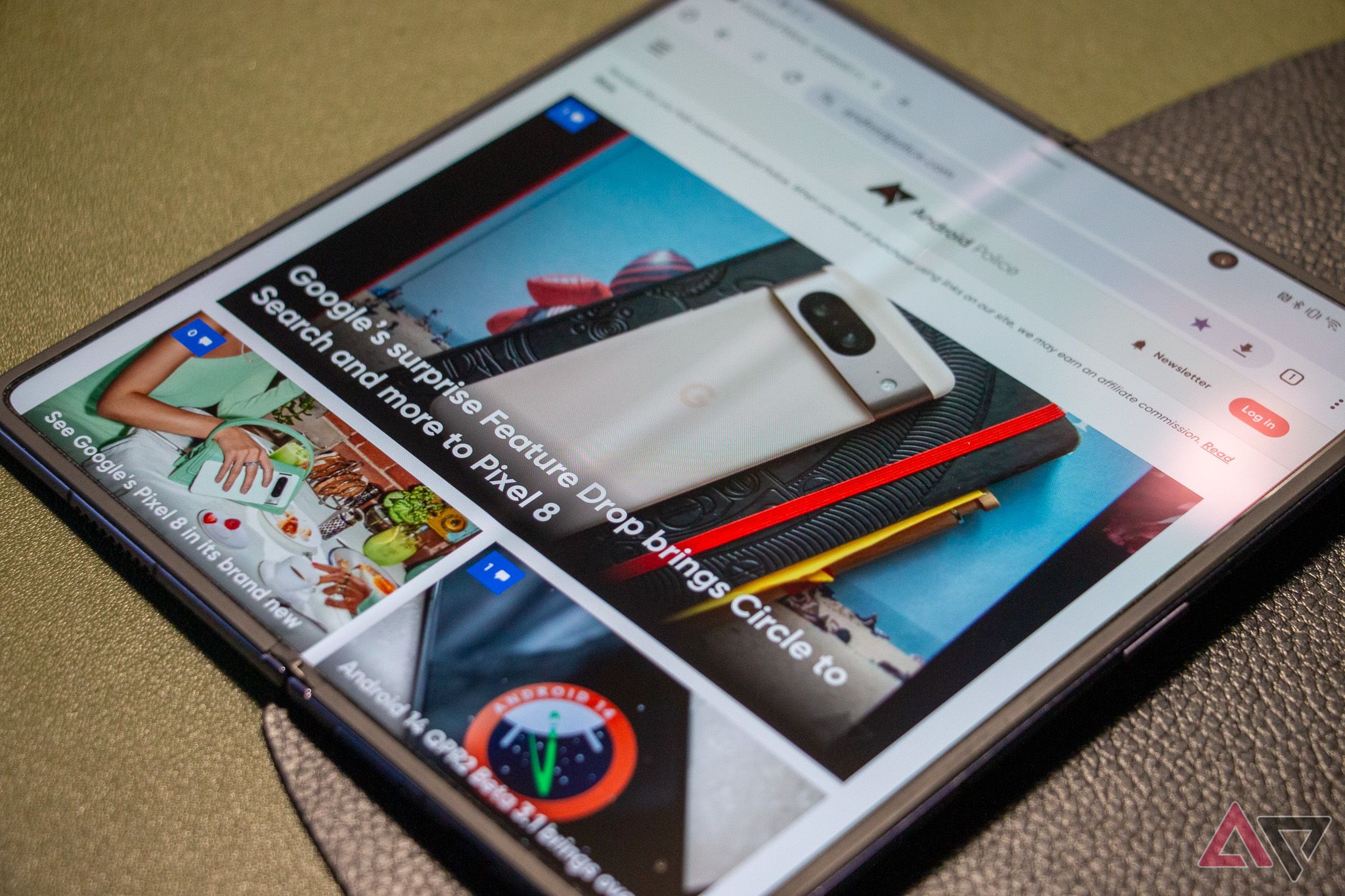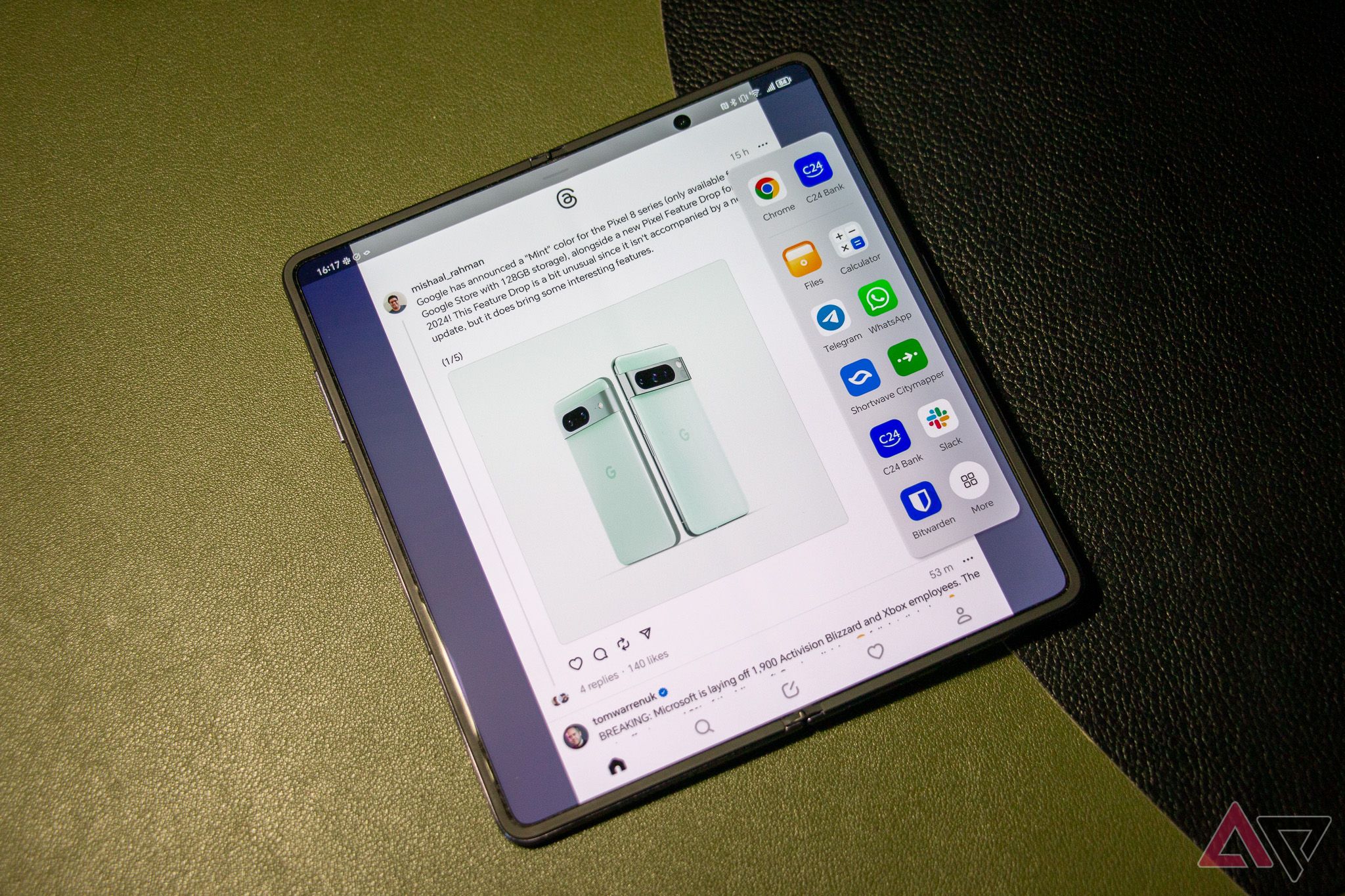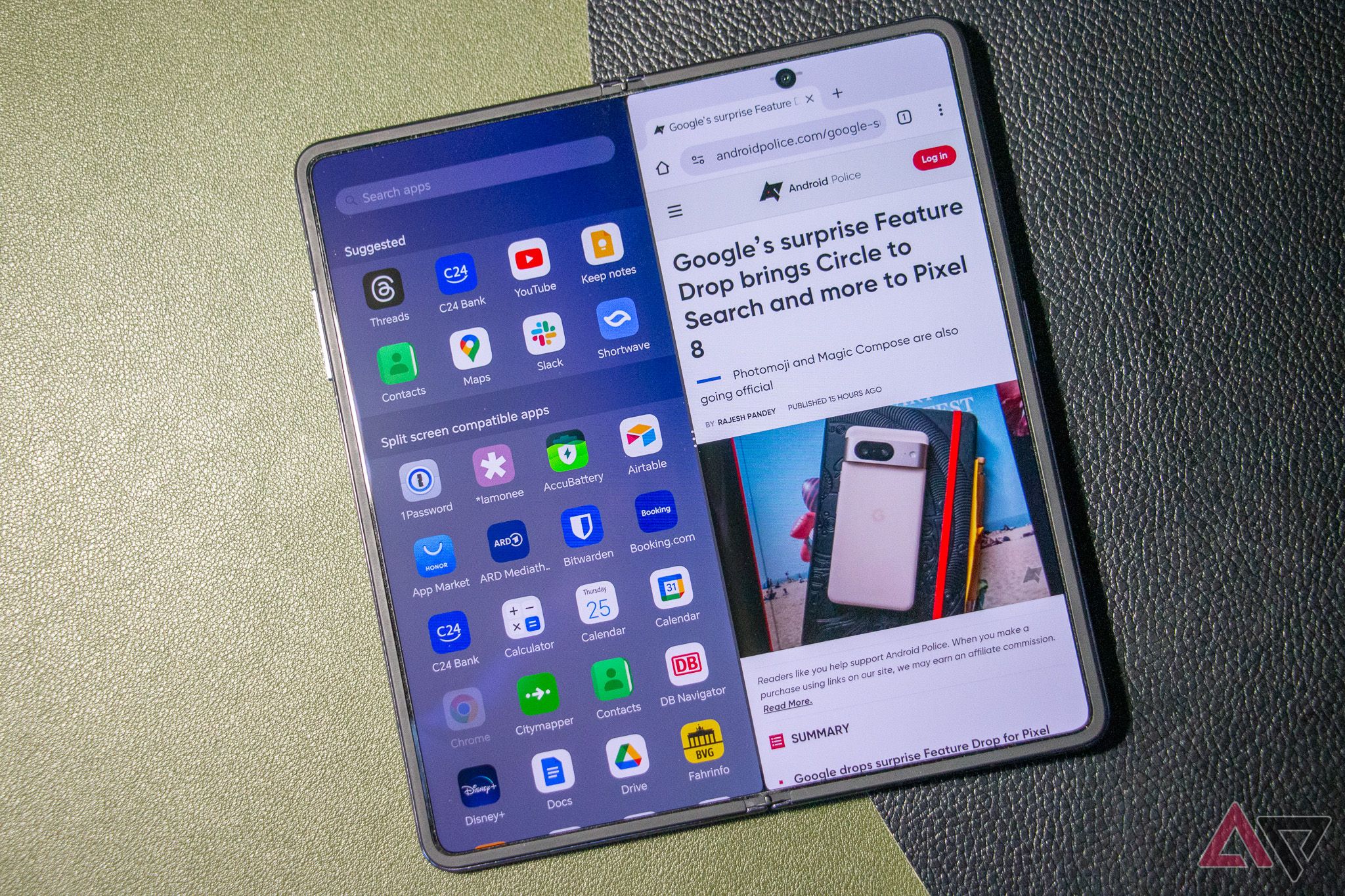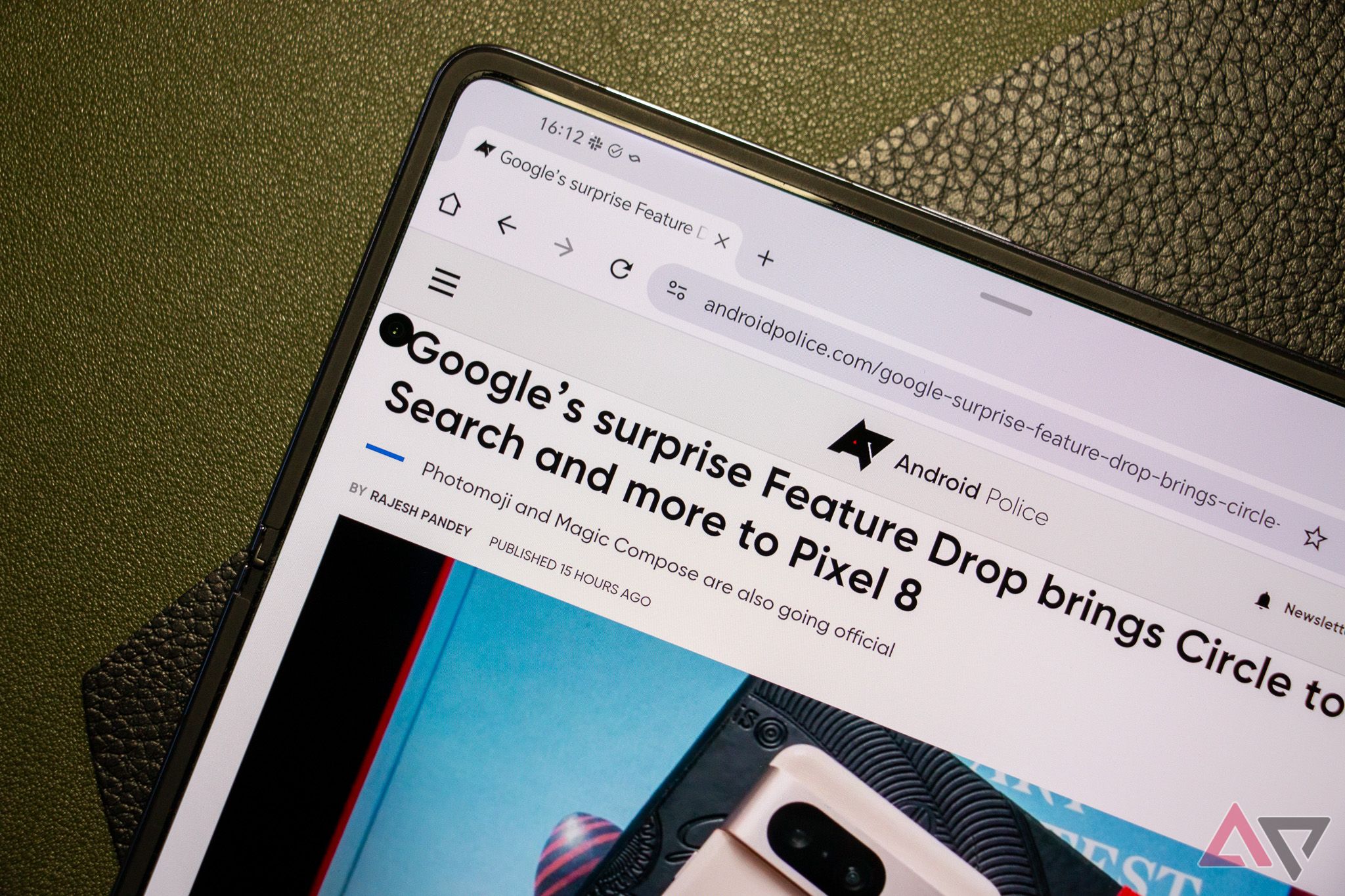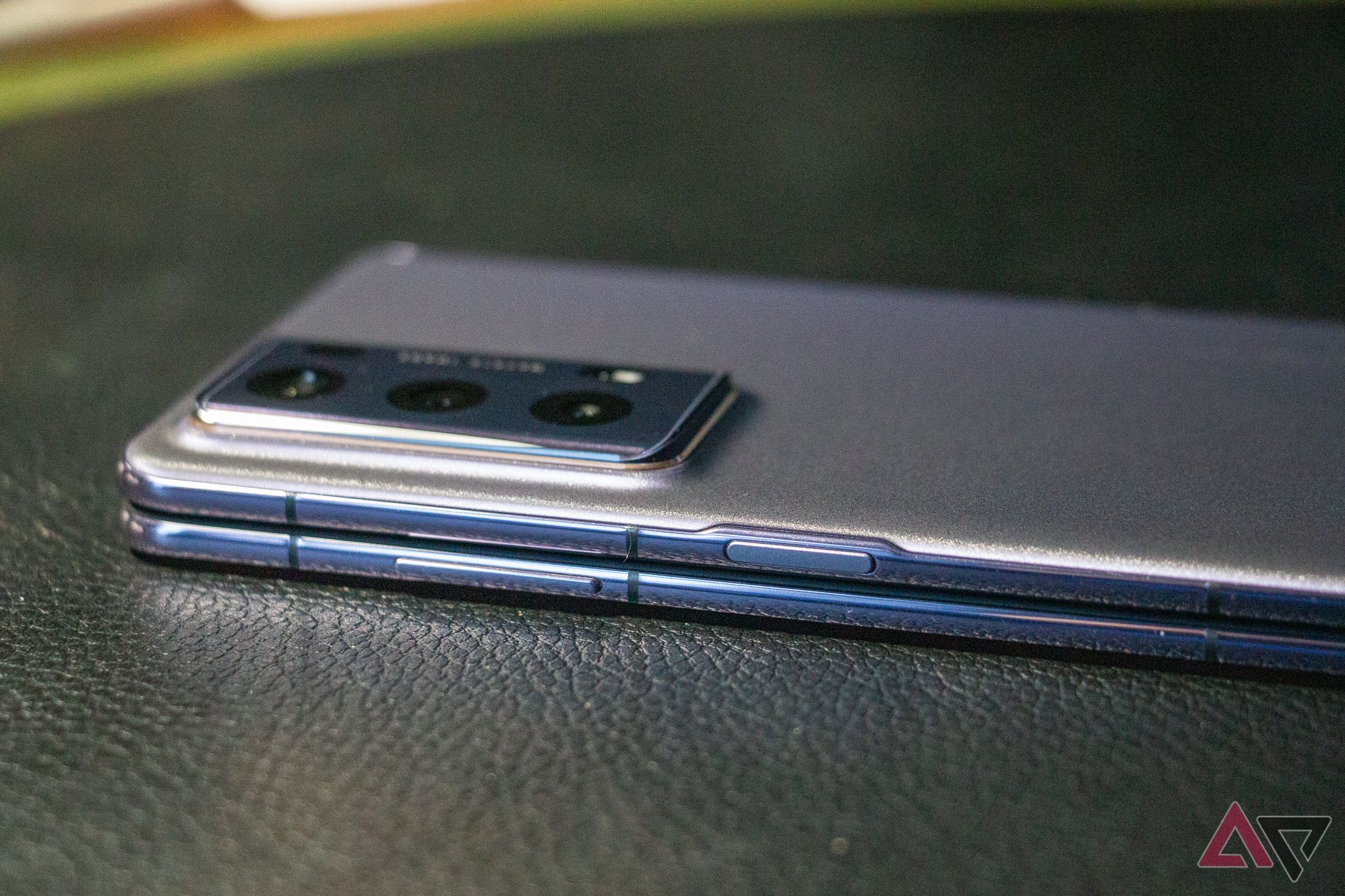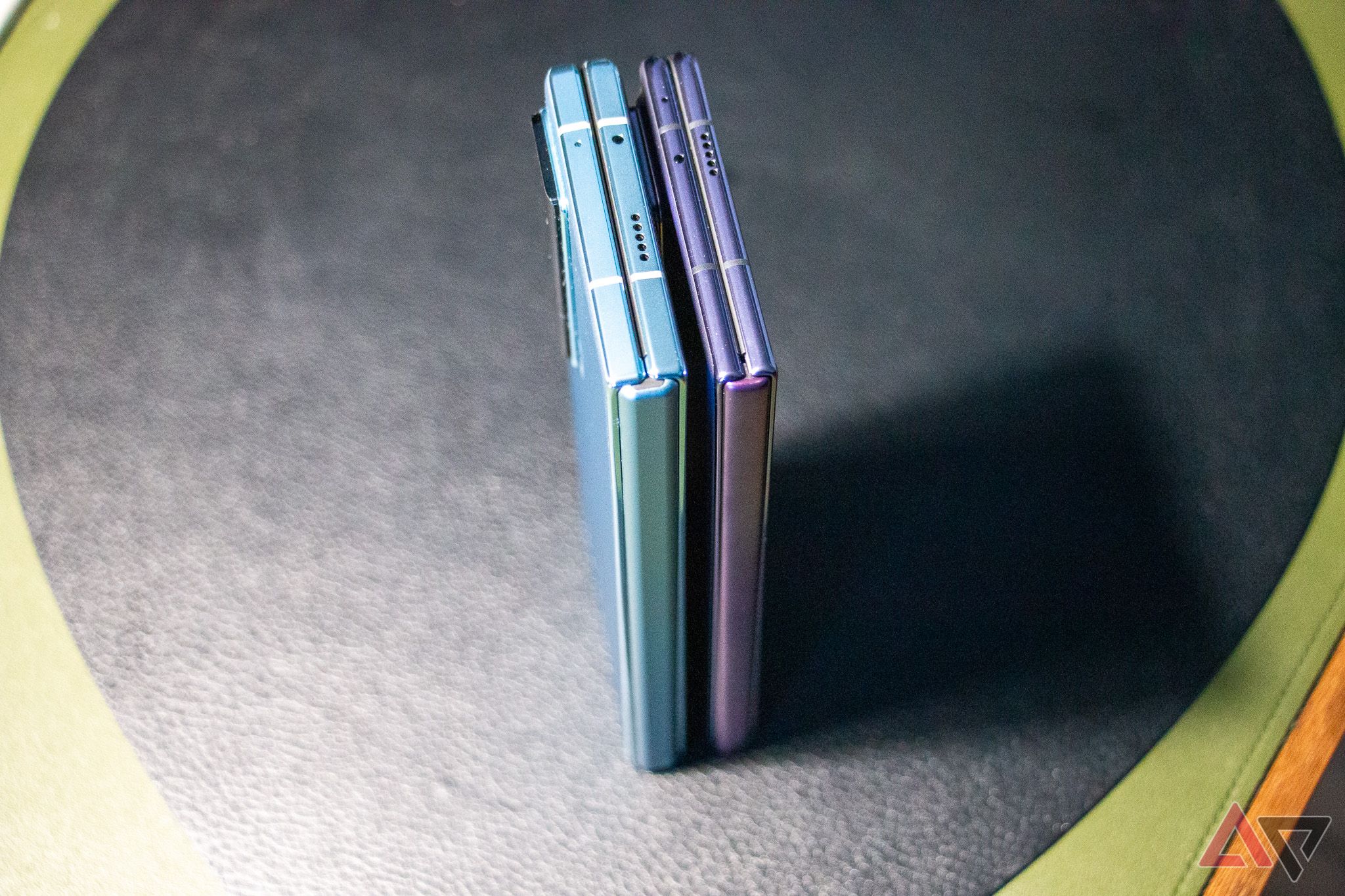The first thing I felt when I held the Honor Magic V2 in my hands was disbelief. It seemed like an impossible device, barely thicker and heavier than a regular phone but still a book-style foldable, with a full separate screen on the inside. Over the next days of reviewing the foldable, that magic washed away just a bit, but I’m still coming away more than impressed. At €2,000, roughly $2,150, that is absolutely the way it has to be.
Let’s take a look at one of the hottest foldables from China that’s now launching in Europe and a few more international markets, and see if the US is missing out on much.
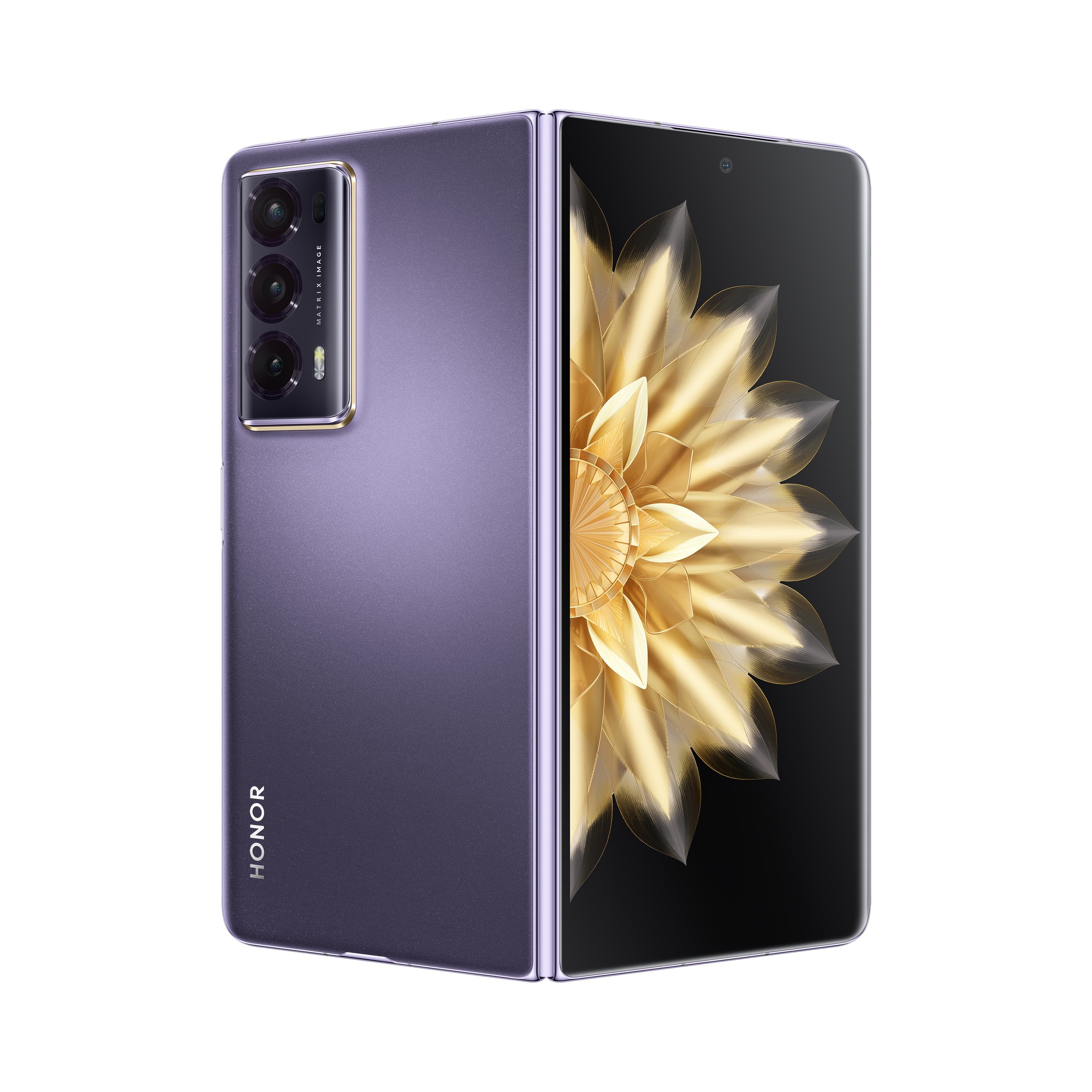
Honor Magic V2
The Honor Magic V2 is the newest iteration in Honor’s foldable lineup, and it’s impossibly thin, undercutting some regular smartphones in thickness even when folded. Despite this, it packs competitive specs, including a big battery, a Snapdragon 8 Gen 2, and great displays outside and inside.
- SoC
- Snapdragon 8 Gen 2
- RAM
- 16
- Storage
- 256/512GB
- Battery
- 5,000mAh
- Ports
- USB-C
- Operating System
- Android 13 / MagicOS 7.2
- Front camera
- 2x 16MP wide (f/2.2)
- Rear camera
- 50MP wide (f/1.9, OIS), 50MP ultra-wide (f/2.0), 20MP telephoto (f/2.4, OIS)
- Connectivity
- 5G, Wi-Fi 7, Bluetooth 5.3
- Dimensions
- Folded: 156.7 x 74 x 9.9mm; Unfolded: 156.7 x 145.4 x 4.7 mm
- Colors
- Purple, black (PU/glass), gold
- Weight
- 231g
- Charge speed
- 66W Honor SuperCharge
- IP Rating
- None
- Stylus
- Yes, both screens
- Impossibly thin
- Great build quality
- Good camera system
- Overall great specs
- Outdated processor and Android version
- Poor software performance
- Very expensive
- No waterproofing
What’s good about the Honor Magic V2?
When you look at the Magic V2, it isn’t immediately obvious that it’s a foldable. At a thickness of 9.9mm and coming in at 231g, it’s barely more unwieldy than many regular phones. Using the Magic V2 over extended periods, it feels just a little top-heavy, which makes sense given the big protruding camera array in the top left corner of the back, but it doesn’t feel out of the ordinary compared to many other handsets. Overall, there is not much separating the experience from the best regular Android phones out there, though, and that’s plainly an incredible engineering achievement.
The build quality is excellent. The Honor Magic V2’s hinge action is snappy and solid, and while it doesn’t snag into half-folded positions as easily as the Samsung Galaxy Z Fold 5, it feels a lot more robust than the Google Pixel Fold’s hinge game. It’s very obvious that this isn’t Honor’s first rodeo, with the Magic Vs presenting a viable option before it already. The hinge is rated for up to 400,000 folds, and nothing creaks or pops when used. This might be due to the re-engineered titanium-based mechanism, which is smaller, lighter, and more rigid.
The Honor Magic V2 also comes in a special Porsche Design Edition
In the box, Honor also adds a unique snap-on case with a kickstand built in, easily transforming the Magic V2 into an entertainment powerhouse. The kickstand can be rotated by 90 degrees, so you can use it in any orientation you want to use the Magic V2 in. This makes up for the shortcomings the Magic V2 exhibits in its half-folded space, though the case does add considerable bulk and weight. You’ll also find a 66W fast charger with a compatible USB-A to C cable included.
Both displays on the Magic V2 support a refresh rate of up to 120Hz, with a 6.4-inch 20:9 screen on the outside and a 7.9-inch almost-square 9.78:9 display on the inside. They provide ample brightness to fight the winter sun while you’re out, with Honor saying that they go up to 2,500 nits. The company also highlights its signature 3840Hz PWM dimming technology, which can help some people who experience eye-strain when using their handsets for a long time.
Thanks to its 20:9 aspect ratio, the outer screen serves as a more than passable display that’s almost indiscernible from a regular phone, with the only odd thing being its slight curve on the right side. The inner screen has the typical raised edges you find in any foldable, but they feel fine to the touch and barely get in the way when using gestures. The same is true for the crease, which you only really notice in bright daylight or when you happen to run your fingers across it. It’s certainly less noticeable than the one on the Pixel Fold.
Even though the Magic V2 is only 4.7mm when unfolded, Honor still managed to fit a 5,000mAh battery into it. That’s thanks to its custom two-part silicon-carbon battery, which is based on a different, more densely packed chemistry than a lithium-ion battery. It also offers a greater power output at a lower level of voltage. Combined with Honor’s battery software optimizations, the phone comfortably lasts me all day. That was true even on a short trip to Sweden’s capital Stockholm, where I used the handset extensively for photos and navigation, all while not connected to Wi-Fi.
I could often comfortably get five hours of screen-on time in, usually with more than 20 to 40 percent battery spared at the end of the day. At home, mostly on Wi-Fi, I even finished a few days with more than 50 percent left (with less screen-on time), which rarely happens to me on other handsets.
When it comes to software, Honor uses some of its own tricks to make multitasking on the big screen easier. You can access Honor’s own version of a taskbar by long-holding the back gesture, allowing you to open apps in a floating window with a single tap. You can also swipe down from the top middle of the screen to quickly start a split-screen layout or to undock a fullscreen app into a floating window. Once you wrap your head around the approach, it works pretty well and becomes second nature for most workflows.
You can find full-resolution versions of these samples in this Google Photos album.
I’m also particularly impressed with the camera system, which comprises a 50MP wide, 50MP ultra-wide, and a 20MP telephoto. Two colleagues I’ve shared some vacation photos with assumed that I took them on a Google Pixel 8 first, which I feel is almost enough to tell you about just how well the camera works.
All in all, the Honor Magic V2 is likely the best put-together foldable I’ve used so far. On the hardware front, it offers next to no compromises, whether you’re looking at the display, battery life, build quality, or the cameras. Things are a bit different when it comes to software, which I will get into now.
What’s bad about the Honor Magic V2?
If Honor truly wants to succeed in international markets, it needs to step up its software game. This was true a few years ago and sadly is still the case today. First and foremost, the phone launches with an outdated Android release, coming with Android 13 rather than 14. This is likely a side-effect of the phone being released back in July 2023 in China, more than half a year earlier than in Europe. It still means that the Magic V2 won’t get as many Android updates as it could have with an Android 14 launch, with the company usually promising three new releases and four years of security patches.
In software, Honor values battery life above everything else. While that’s a good thing on the surface, it leads to a lot of problems with apps. During my test period, notifications from many apps were vastly delayed or didn’t kick in at all. While it seems like most messenger apps are exempt from these restrictions, it appears that it’s a matter of a manually curated allowlist, meaning that if you use just slightly less popular apps than WhatsApp and Telegram, you may never notice that someone wrote you a message. Even an app like Google Tasks or Duolingo isn’t safe from this issue, with reminders only coming to me with wild delays, and sometimes not at all.
These problems can be mitigated in battery settings, where you can toggle off automatic app management on a per-app basis under App launch. But really, you shouldn’t have to worry about not getting notifications on a phone at all, as reliable communication is arguably still at the heart of what any phone should be all about today.
The battery optimizations go even further than that. I’ve set up Night Mode to kick in from 11pm to 7am, and sometimes, the phone just refuses to automatically enter the distraction-free mode even though it’s scheduled to. Night Mode not automatically kicking in despite being on a schedule means that I have to double-check or manually turn it on just in case to get a good night’s sleep. To fix the automatic schedule, a device restart usually does the trick — which is why I presume it to be a battery optimization problem.
It’s a shame that Honor even feels the need to optimize battery life this aggressively. After all, the big 5,000mAh battery should already provide most people with more than enough battery life. I’d rather sacrifice 10 to 20 percent less battery life at the end of the day than constantly fearing to miss critical notifications.
With this big issue out of the way, there are a few more problems I have with Honor’s software. The multitasking system I described earlier works mostly fine, but there are fringe cases. When entering split-screen, Honor’s system doesn’t recognize installed web apps, which means you can’t use a few of your installed services in this mode. I also think a bottom-based task bar would be easier to access than the long-hold back gesture method Honor opted for.
In contrast to the Pixel Fold, the Magic V2 doesn’t force apps into your preferred orientation. This means that you have to scramble to turn your phone 90 degrees depending on which apps you use, with some of them simply not working in landscape. Auto-rotate is also a global setting, so you can’t leave it turned off for the exterior screen and only turn it on for the inner screen, which is a setting I prefer.
There are also some minor hardware gripes I don’t want to leave unaddressed. Thanks to its early China release in 2023, the Magic V2 ships with the Snapdragon 8 Gen 2 rather than the latest Gen 3. Given how good the Gen 2 already is and how well the phone performs with it, this is a minor gripe, but at the price of €2,000, I don’t love seeing compromises like this.
Then, the volume rocker and the power button sit on opposite sides of the phone when it’s unfolded, which means they’re on the same side when it’s folded. This leads to an annoyingly inconsistent experience when switching between form factors, with the volume rocker sometimes on the left and sometimes on the right.
The protruding camera array at the back is also thick enough to be a big hindrance when using the phone flat on a table. When it’s folded, it wobbles widely, and when unfolded, the side with the camera bump sits noticeably higher on the table. And speaking of the front-facing camera, I wish Honor tucked it into a corner rather than in the middle of one half when unfolded. There are far too many situations where the black dot is in the way when using the phone in landscape mode, including videos. I’d happily trade that for slightly more off-center selfies.
The phone also doesn’t have any kind of official rating for waterproofing. You’d best make sure to protect it from rain and dirt if you don’t want your €2,000 foldable to break. These are all points I’ve already criticized in the Magic V2’s predecessor, the Magic Vs, and it’s a shame that they remain in place on this otherwise impeccable hardware.
The Honor Magic Vs is proper chonky next to the Magic V2.
Should you buy it?
As I mentioned at the beginning, the Honor Magic V2 isn’t available in the US, and even where it’s available internationally, it’s prohibitively expensive at €2,000. You will likely have to think twice about spending this amount of money. On the one hand, the Magic V2 is likely the most technologically advanced hardware out there in the foldable space right now. On the other hand, the company still hasn’t figured out how to optimize its Android skin for an international audience.
If hardware is the most important thing to you, and you want to live on the bleeding edge of what’s currently physically possible in phones, then the Magic V2 might be worth consideration. But if software is more important to you (or even just equally so), the OnePlus Open presents a much more viable alternative. OnePlus’s smart software features that allow you to use three apps at the same time without things feeling cramped are unmatched, and even if the hardware may not be as impeccable as on the Magic V2, it offers a better overall experience. That’s particularly true when you consider its $1,700 price tag, or €1,800 in the EU, which is €200 less than what Honor charges.

Honor Magic V2
The Honor Magic V2 is an impeccable foldable phone that makes only few tradeoffs when it comes to hardware. Its software may be lacking, but overall, it’s the best book-style foldable hardware you can get right now.
Source link

